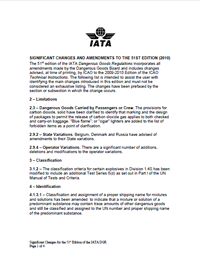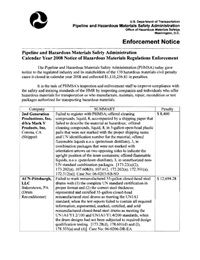Are you missing something important?
Packaging is the foremost element of all shippers' responsibilities in the safe transportation of hazmat and dangerous goods. This is particularly true when it comes to shipping hazmat by air. Packages that travel by air are subjected to a variety of conditions that are usually more severe than other modes of transport. Some of these conditions include drastic temperature changes, intense vibration and extreme drops in atmospheric pressure. Reductions in pressure tend to cause leakage of liquids or even bursting of the packagings during flight!
So what does this have to do with marking requirements? Well, remembering that the intent of safe hazmat shipping is to ensure that a hazardous material is not released during transport, a shipper must not use packaging for air shipments unless that packaging meets the applicable testing requirements and is closed in a way that ensures resistance to pressure changes throughout the transportation cycle.
Most shippers of hazmat purchase UN standard packagings (e.g. packagings which conform to both the UN Model Regulations and the HMR) for this purpose. These performance-oriented packagings require the application of
UN Specification Markings. Normally applied by the packaging manufacturer, these marks are still ultimately the responsibility of the shipper.
Trained hazardous materials shippers are aware of the significance of the UN specification mark, but often overlook the following component:
If your business uses single packagings (e.g. drums, jerricans, etc.) to ship liquid hazmat or dangerous goods by air, a single packaging must have a marked test pressure of not less than...- 250 kPa for liquids in Packing Group I,
- 80 kPa for liquids in Packing Group III of Class 3 or Division 6.1, and
- 100 kPa for other liquids, or
- a pressure related to the vapor pressure of the liquid to be conveyed, whichever is greater (see reference 49 CFR 173.27(c) and IATA DGR 5.0.2.14 and DGR 6.3.5).
To learn more about a shipper's legal responsibilities for shipping hazmat, UN packaging, hazmat marking requirements and more, the
Bureau of Dangerous Goods offers several hazmat training courses for both novices and veterans.
We are also proud to introduce
Hazmat University, a completely online hazmat training program designed to bring the same quality of
Bureau of Dangerous Goods training that has been provided in classrooms for over 25 years to shippers, freight forwarders and carriers via the Internet.

